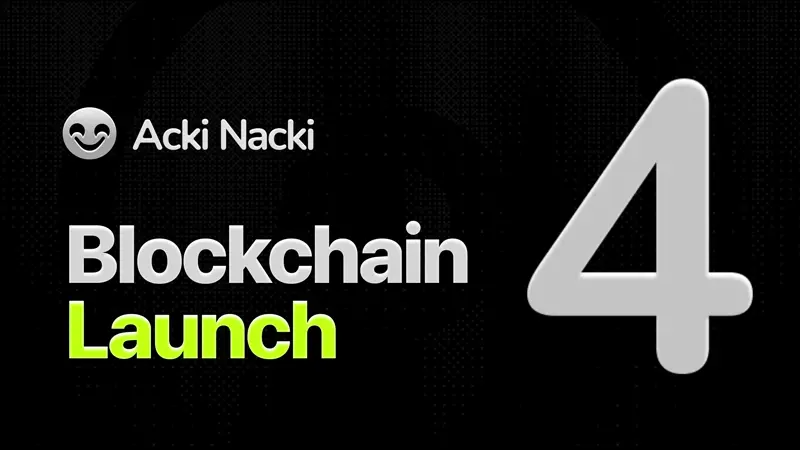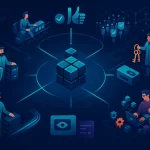Remember the first time you learned a foreign language? You stumbled over new words, mispronounced phrases, felt awkward, until it clicked. Now imagine learning a new kind of language: one not for chatting or debating, but for commanding artificial intelligence to do your coding for you.
This is vibe coding: a nascent paradigm where humans converse with AI in natural language, via text or voice, to build software. It’s not about replacing coders; it’s about elevating them, turning them into AI-orchestrators, project leaders with an army of AI “full-stack devs” under their direction.
Where Did This Come From?
The term “vibe coding” was first mentioned by Andrej Karpathy (co‑founder of OpenAI, ex‑Tesla AI lead) in February 2025. He described it like this:
“It’s not really coding – I just see stuff, say stuff, run stuff, and copy‑paste stuff, and it mostly works.”
Mainstream media quickly picked it up. Silicon Valley startups and major tech players began building tools, like Composer and Superwhisper, that let anyone talk or type in plain English and get real, workable code. Business Insider ran a front-page piece titled “Silicon Valley’s next act: bringing ‘vibe coding’ to the world”. Google’s CEO Sundar Pichai casually talked about vibe coding too, saying he builds web apps by prompting AI, “wishing he could do more” of it.
And this is only the beginning.
What It Is — And What It Isn’t
Vibe coding is not magic. It’s:
- A natural-language interface layer on top of AI code generation.
- Humans describing what they want in plain language while AI models write the how.
- A feedback loop: you test, adapt, refine, iterate with AI assistance.
It’s not:
- A replacement for human judgment, oversight, or understanding (at least, it shouldn’t be).
- A fully reliable avenue for mission-critical, high-security systems, yet.
- A shortcut to skilled coding; without thinking, your prompts lead to messy systems.
Ars Technica’s Simon Willison cautions:
“Vibe coding your way to a production codebase is clearly risky… evolving existing systems, where quality and understandability are crucial.”
Legacy systems? Regulatory compliance? Large-scale app architecture? Those still need human expertise.
Why It Matters: Programmers Become Orchestrators
Think back to being a coder. You tackled problems line by line. Now shift your identity:
- From coder to project lead
You design the system, envision the modules, set the constraints. You don’t fight with syntax, you draft tasks in English. - An army of AI developers
For each module, frontend widget, backend service, database schema, you tell the AI: “Write a REST endpoint to send emails.” Boom, code appears. You review and adapt. - Instant full‑stack teams
Suddenly you wield UI/UX, DB, API, authentication, tests, all orchestrated by you via natural language prompts. - Kids start doing it too
Just like learning Scratch or HTML, children will learn “vibe syntax”: “create a chat window”, “add a button”, “fetch Pokémon data.” They’ll build playable, publishable apps far earlier than we ever did. - Bridging careers
A marketer, teacher, or scientist explaining in their own domain language can spin up useful app prototypes without formal CS training. They become builders, problem solvers. - Scaling creativity
Mid-sized dev teams can double their output, AI does the boilerplate, humans handle logic, design, nuance.
OpenAI’s Kevin Weil explained how AI coding tools like ChatGPT are already accelerating engineer productivity, echoing a self-reinforcing cycle of improvement.
The Language of AI: New Rules, New Discipline
But this isn’t about sloppy prompts or vague “I wanna make a button.” Vibe coding demands a new literacy:
- Clarity & Intent
“Write a Python function that reverses a string in O(n) time” is far better than “reverse text”. - Context awareness
The AI needs to know your framework, style, existing codebase. Without context, output can misalign. - Specification rigor
This isn’t unlike writing detailed requirements. You’re specifying behavior not syntax.
It’s a skill, like spoken language fluency, but more technical. An article on natural-language oriented programming (NLOP) argues this approach democratizes creation, but requires clear conceptual framing.
Where the Future Leads: Predictions
Here’s my personal timeline, warts and all:
| Years | Momentum & Risk |
|---|---|
| 2025–26 | Adoption surges: more tools (Composer, Cursor, Superwhisper). Tech leaders hype vibe coding. Google, Nvidia emphasize “human = programming language”. But early bugs, security issues, prompts gone bad begin to surface. |
| 2027–29 | Vibe coding matures: editors get grammar checking, context managers, prompt version control. Kids in high school building simple apps. Basic app kits can be produced by any creative user. Corporates pilot with guardrails. |
| 2030–33 | Vibe coding becomes mainstream. Devs transition into AI project managers. Entire startups founded by non-developers, powered by prompt engineering teams. Legacy “rigid actually programmer” roles shrink; oversight, architecture, and AI-trainer roles expand. |
| 2034–38 | Inferable systems: AI can audit your prompt-code pipeline for bias, security, optimization. Vibe-coders tweak, AI fixes. “Prompt compilers” emerge, translators from English to best-effort code. Education revolutions: next-gen creators learning “vibe grammar” at 8th grade level. |
| 2040+ | Full creative autonomy. Non-programmers build full-scale virtual worlds, interactive experiences, personal agents. Humans become orchestration layers across hybrid projects, carving vision while AI handles execution. |
But… Can AI Respect Context, Ethics, Quality?
There’s a tension. The more abstract your prompts, the easier it is to lose track of what’s hidden under the AI’s hood. Security vulnerabilities, logic bugs, or messy spaghetti structures could emerge. And we still need understanding, of data models, dependencies, performance constraints.
Experts note: AI may reduce demand for entry-level coders doing boilerplate, but skilled developers remain essential for system design, testing, maintenance.
Tools like MIT’s new LLM coders aim to generate syntactically correct, rule-compliant code, reducing bugs in vibe outputs, they’re the grammar and linter systems of natural language code.
Industry will respond with:
- Prompt version control: track intent history
- Automated review systems: parse generated code for security patterns
- Compliance prompts: “always sanitize this input”
- Semantic visualizers: see prompt-to-code flows
The Mindset Shift: Programmer as Poet
Learning vibe coding is like learning a new dialect, not another C++, but the language that bridges thought and instruction. Programmers will need:
- Precision in thinking and language
Vagueness yields junk code. - Iterative reflection
Testing and refining prompts becomes natural. - Guarded abstraction
Trust the AI, but own the generated artifact.
Or, in biker language: vibe coding is you setting the trail, sketching the jump, the AI building the ramp in semi‑darkness. You land, or wipe out. You learn, adjust.
Conclusion: The Future is Conversational Building
Vibe coding isn’t a threat to programmers. It’s a leap forward: from writing code to orchestrating intelligence. It amplifies human creativity. It empowers a new generation hanging out in 8th-grade classrooms, building apps with voice commands and prompt structure before they learn loops.
But it also invites new responsibilities: rigorous thinking, ethical oversight, AI literacy. As we ride this new paradigm, we should keep an eye on what Karpathy warned: don’t accept blindly, don’t let code become mystifying. You’re still the architect.
Vibe coding is not sci‑fi, it’s 2025. And it’s just getting started.




